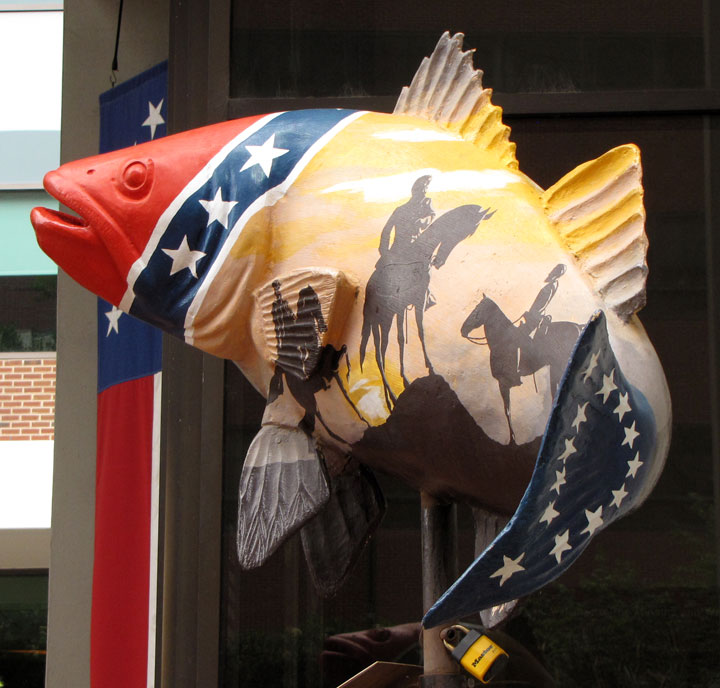

Confederate White House
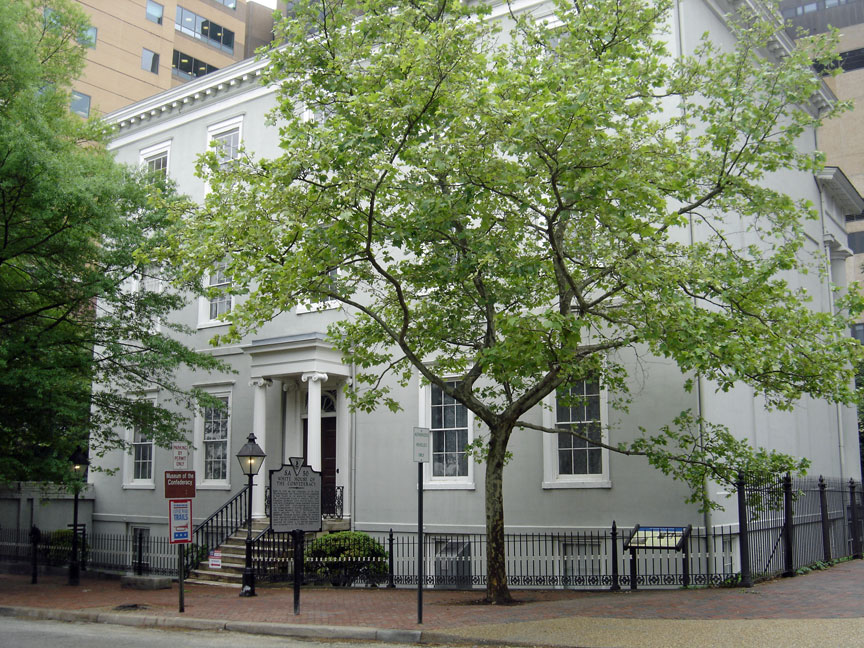
White House of the Confederacy
The Museum of the Confederacy is located in Richmond, Virginia. The museum includes the former White House of the Confederacy and maintains a comprehensive collection of artifacts, manuscripts and photographs from the Confederate States of America and the American Civil War (1861-1865).

The White House of the Confederacy is a gray stuccoed neoclassical mansion built
in 1818 by John Brockenbrough, who was president of the Bank of Virginia.
Designed by Robert Mills, Brockenbrough’s private residence was built in early
nineteenth century Richmond's affluent Shockoe Hill neighborhood (later known as
the Court End District), and was two blocks north of the Virginia State Capitol.
Among his neighbors were U.S. Chief Justice John Marshall, Aaron Burr, defense
attorney John Wickham, and future U.S. Senator Benjamin Watkins Leigh.
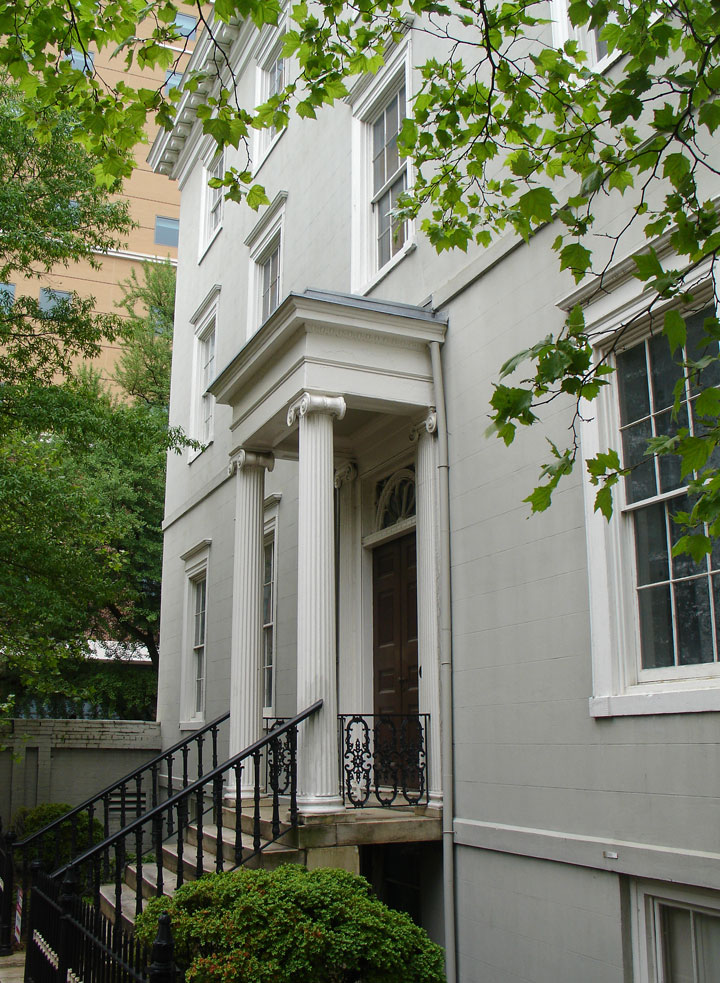
Sold by the Brockenbrough family in 1844, the house passed through a succession
of wealthy families throughout the antebellum period, including U.S. Congressman
and future Confederate Secretary of War James Seddon. Just prior to the American
Civil War, Lewis Dabney Crenshaw purchased the house and added a third floor. He
sold the home to the City of Richmond, which in turn rented it to the
Confederate government as its Executive Mansion.
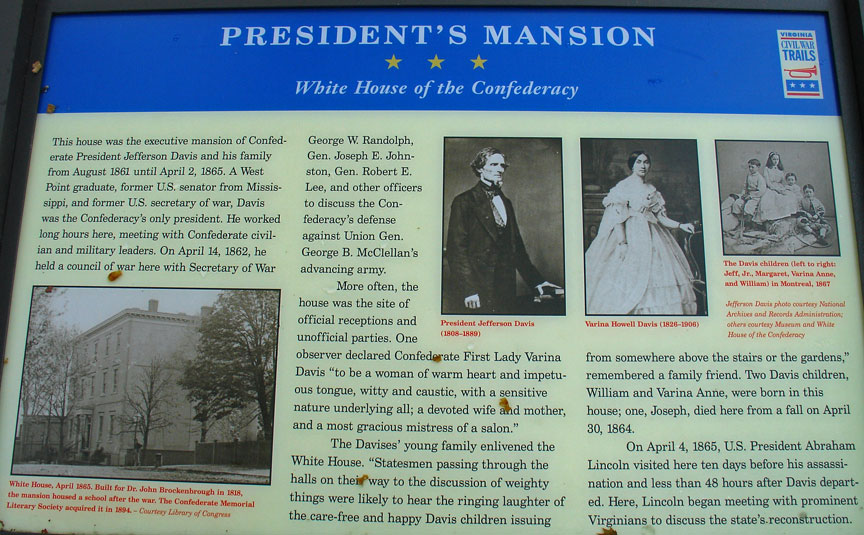
Jefferson Davis, his wife Varina, and their children moved into the house in
August 1861, and lived there for the remainder of the war. Davis suffered from
recurring bouts with malaria, facial neuralgia, cataracts (in his left eye),
unhealed wounds from the Mexican War (bone spurs in his heel), and insomnia.
Consequently, President Davis maintained an at-home office on the second floor
of the White House. This was an unusual practice at that time – the West Wing of
the White House in Washington, DC, was not added until the Theodore Roosevelt
Administration. President Davis’ personal secretary, Colonel Burton Harrison,
also lived in the house.
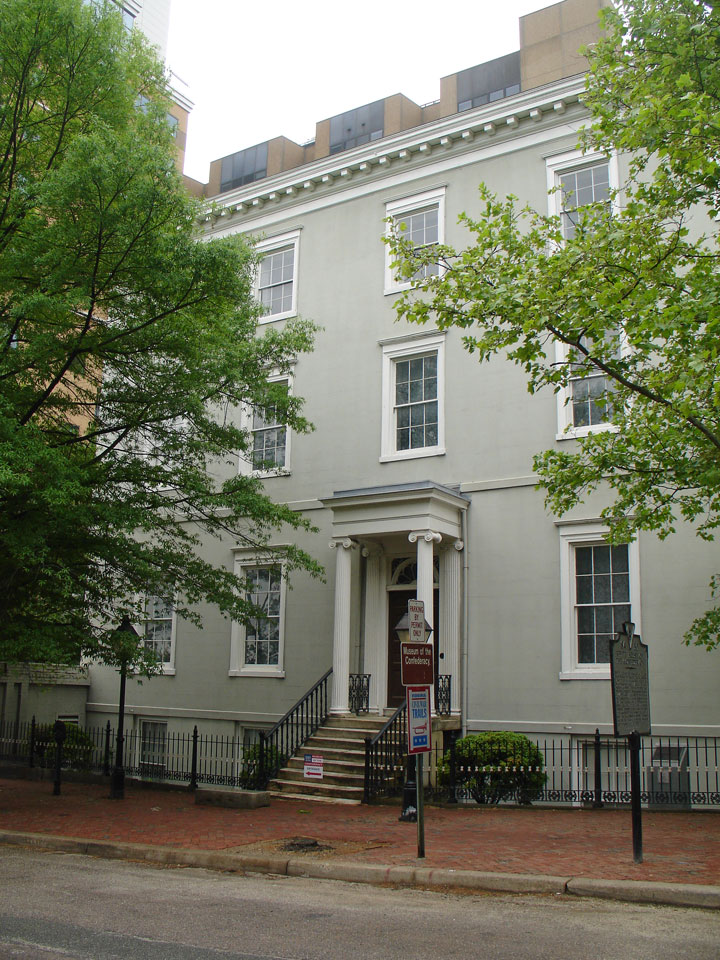
The Davis family was quite young during their stay at the White House of the
Confederacy. When they moved in the First Family consisted of the President and
First Lady, six year-old Margaret, four year-old Jefferson Davis, Jr., and two
year-old Joseph. The two youngest Davis children, William and Varina Anne
(“Winnie”), were born in the White House, in 1861 and 1864, respectively. Among
their neighborhood playmates was George Smith Patton, whose father commanded the
22nd Virginia Infantry, and whose son commanded the U.S. Third Army in World War
Two. Joseph Davis died in the spring of 1864, after a 15-foot fall from the
railing on the White House’s east portico. Mrs. Davis’ mother and sister were
occasional visitors to the Confederate executive mansion.
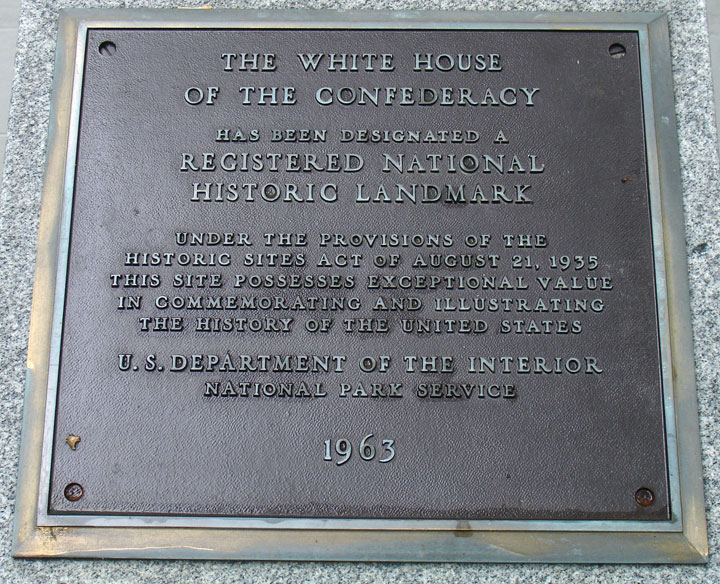
The house was abandoned during the evacuation of Richmond on April 2, 1865.
Within twelve hours, soldiers from Major General Godfrey Weitzel’s XVIII Corps
seized the former Confederate White House, intact. President Abraham Lincoln,
who was in nearby City Point (now Hopewell, Virginia), traveled up the James
River to tour the captured city, and visited Davis' former residence for about
three hours - although the President only toured the first floor, feeling it
would be improper to visit the more private second floor of another man's home.
Admiral David Porter accompanied Lincoln during the visit to the former
Confederate executive mansion. They held a number of meetings with local
officials in the White House. Among them was Confederate Brigadier General
Joseph Reid Anderson, who owned the Tredegar Iron Works.
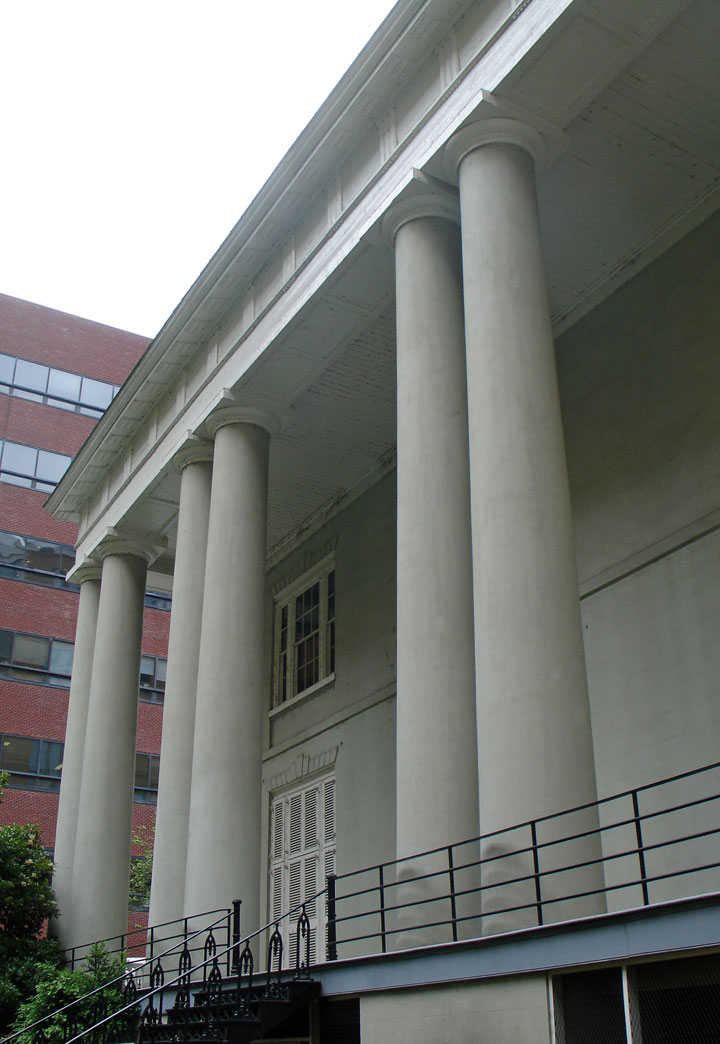
During Reconstruction, the White House of the Confederacy served as the
headquarters for Military District Number One (Virginia), and was occasionally
used as the residence of the commanding officer of the Department of Virginia.
Among those who served there were Major Generals Edward O.C. Ord, Alfred Terry,
Henry Halleck, and Edward R.S. Canby. When Reconstruction ended in Virginia,
(October 1870), the City of Richmond retook possession of the house, and
subsequently used it as Richmond Central School, one of the first public schools
in postwar Richmond.
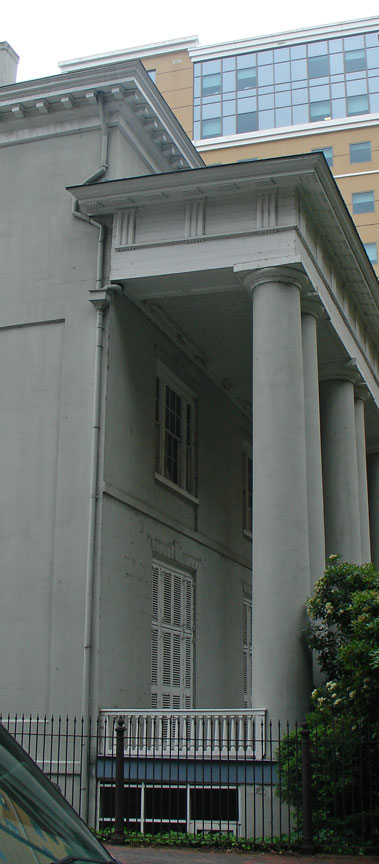
When the City announced its plans to demolish the building to make way for a
more modern school building in 1890, the Confederate Memorial Literary Society
was formed with the sole purpose of saving the White House from destruction.
Text from Wikipedia
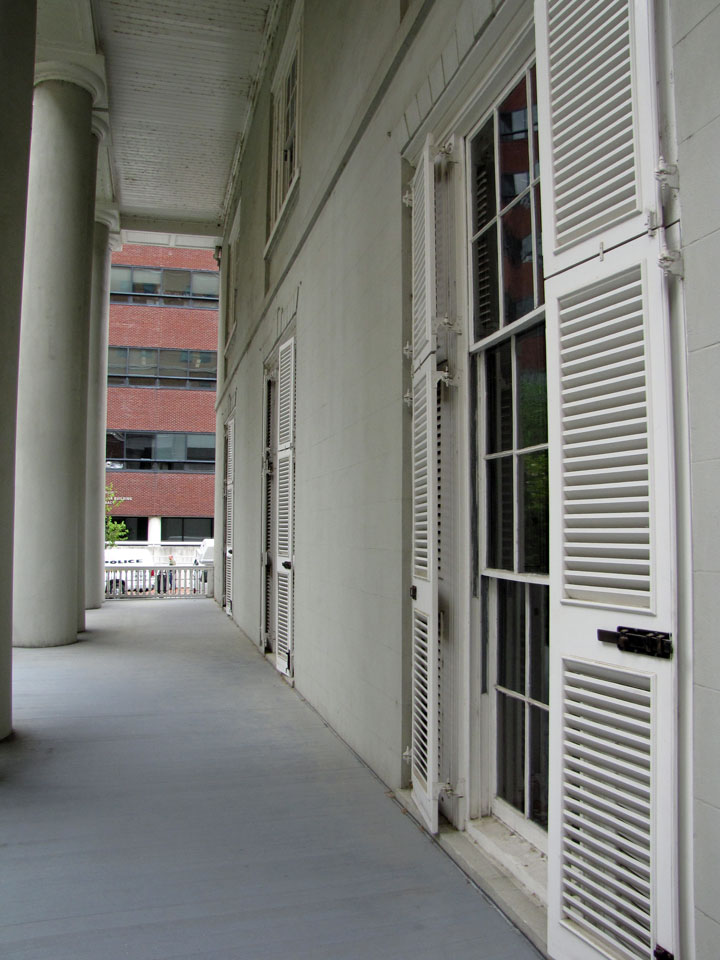
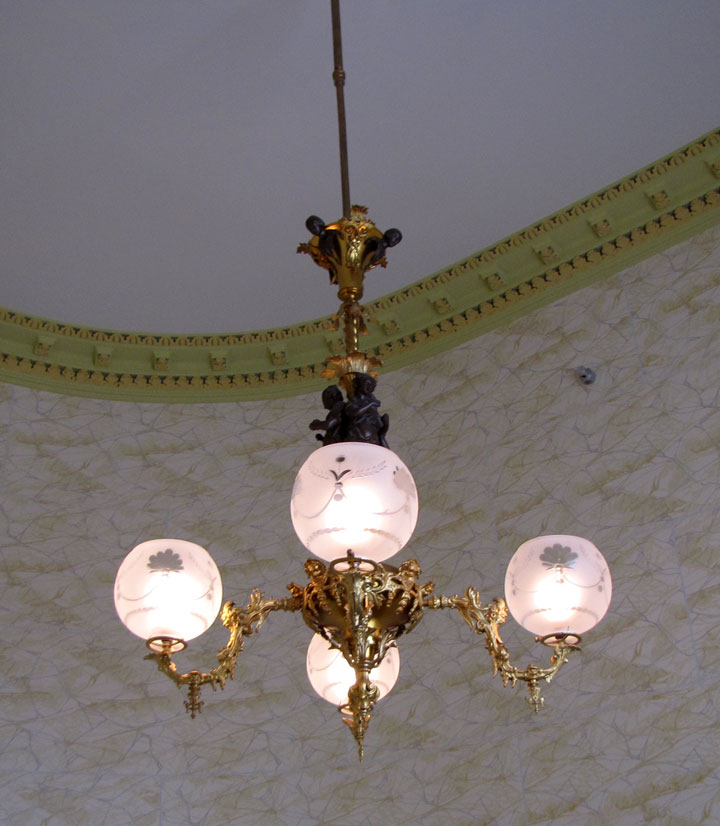
interior lighting
formerly gas, now electric
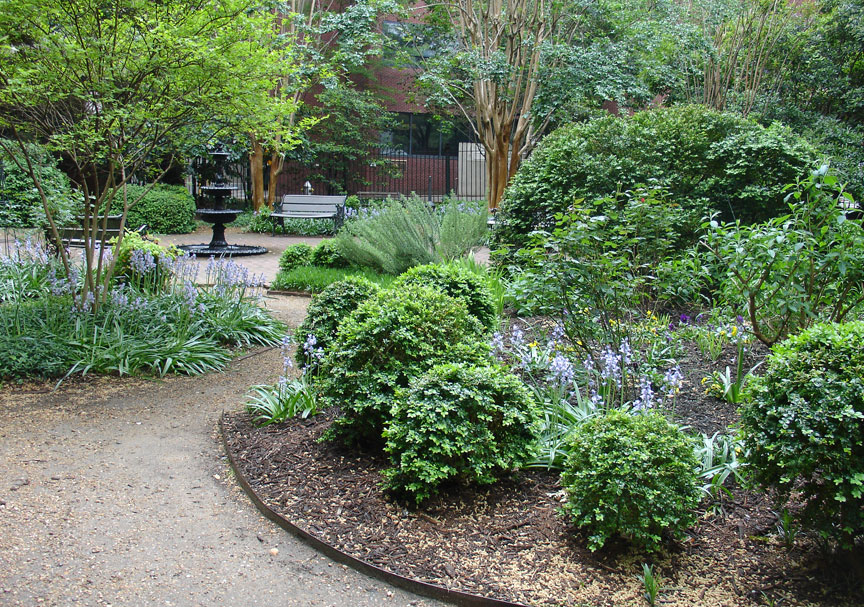
the garden

before restoration
Photos of the Neighborhood around the White House
The Museum of the Confederacy
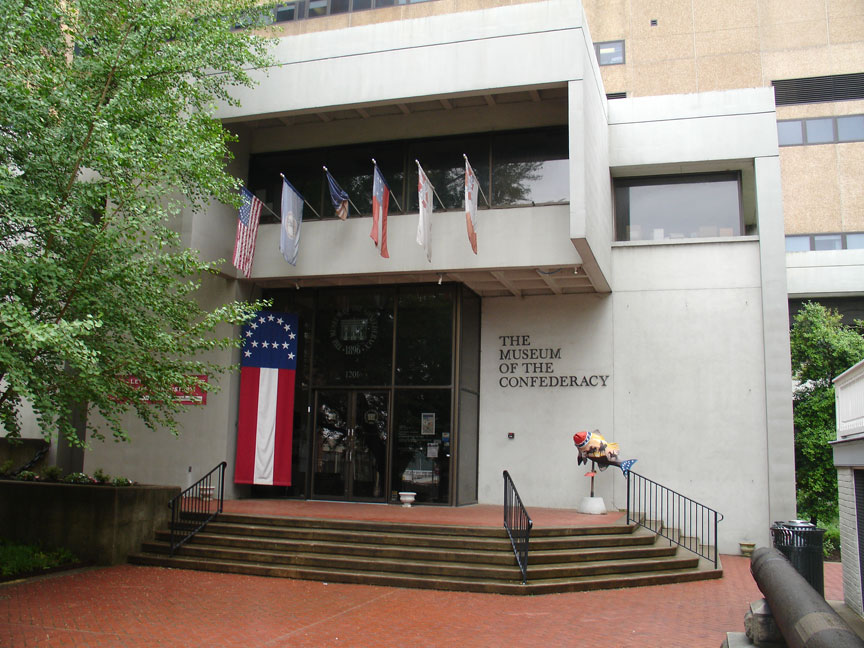
The Museum of the Confederacy
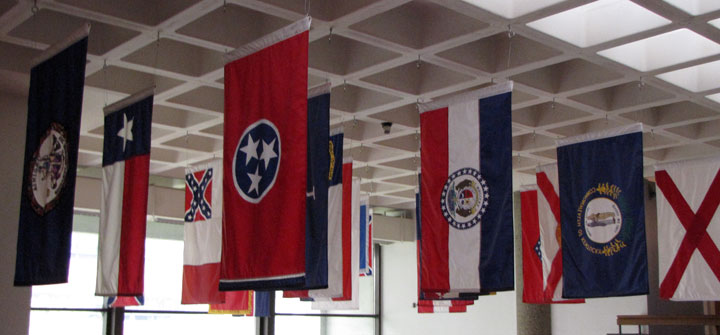
flag gallery
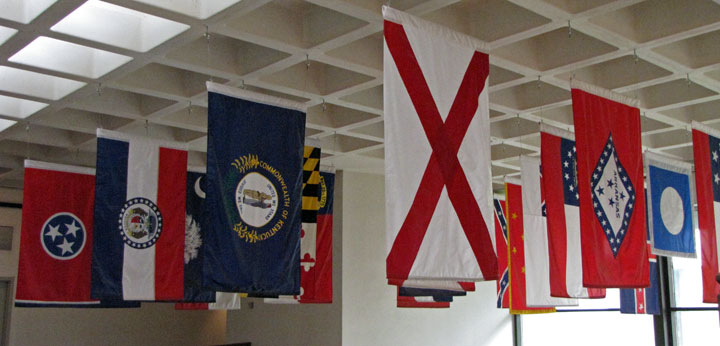
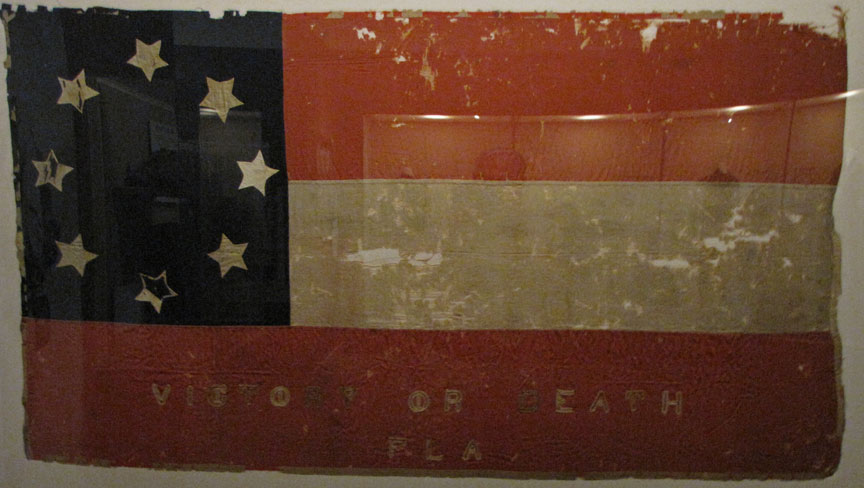
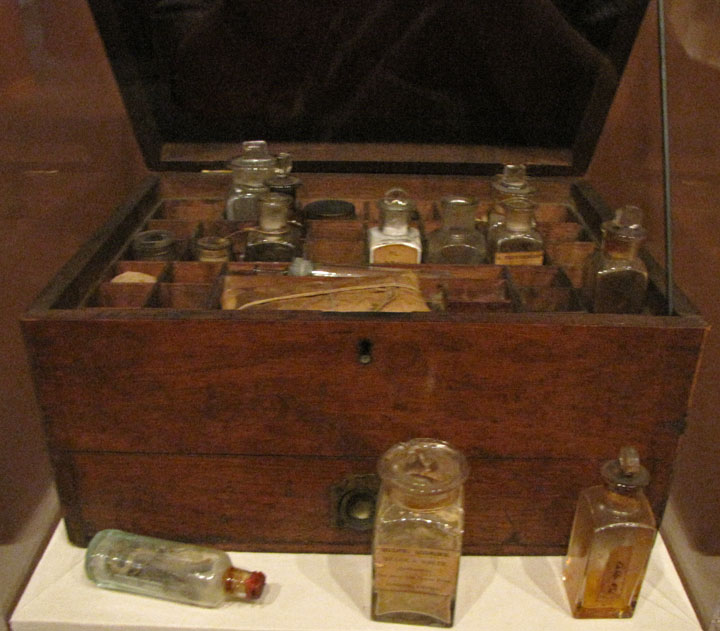
medicine chest
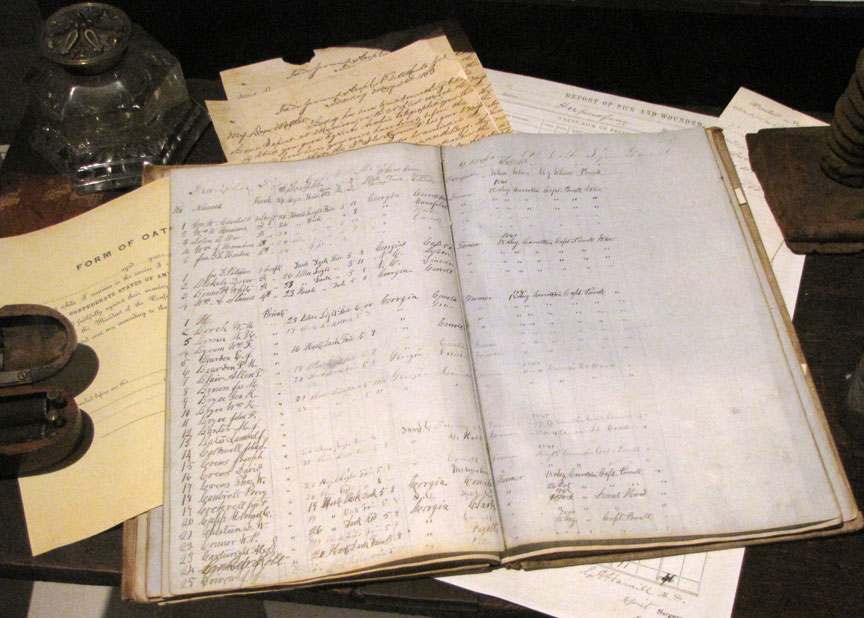
hand written records

camp painting
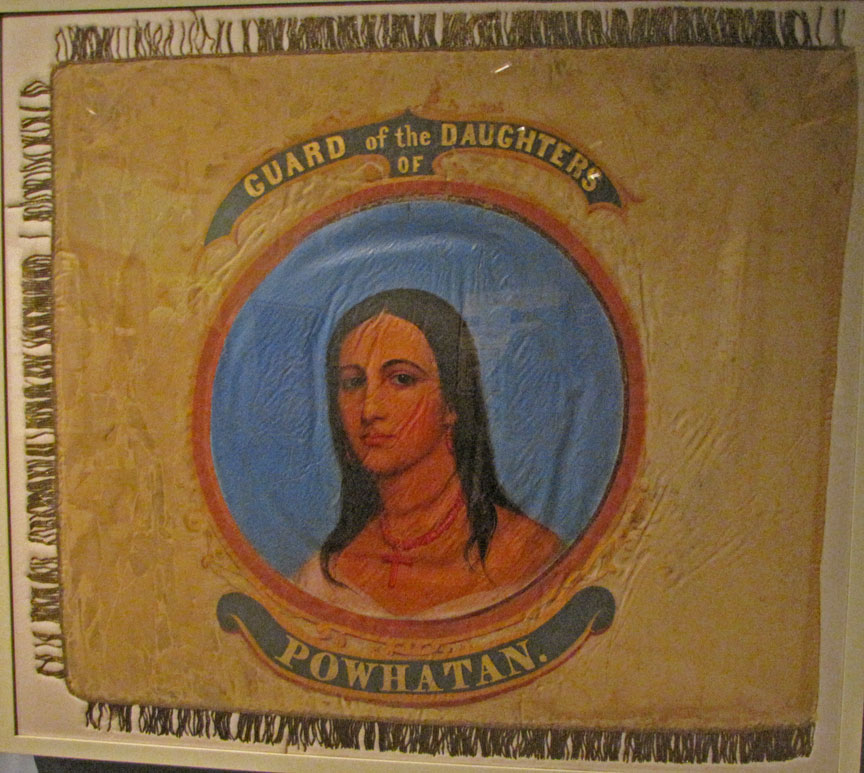
Virginia Cavalry Flag

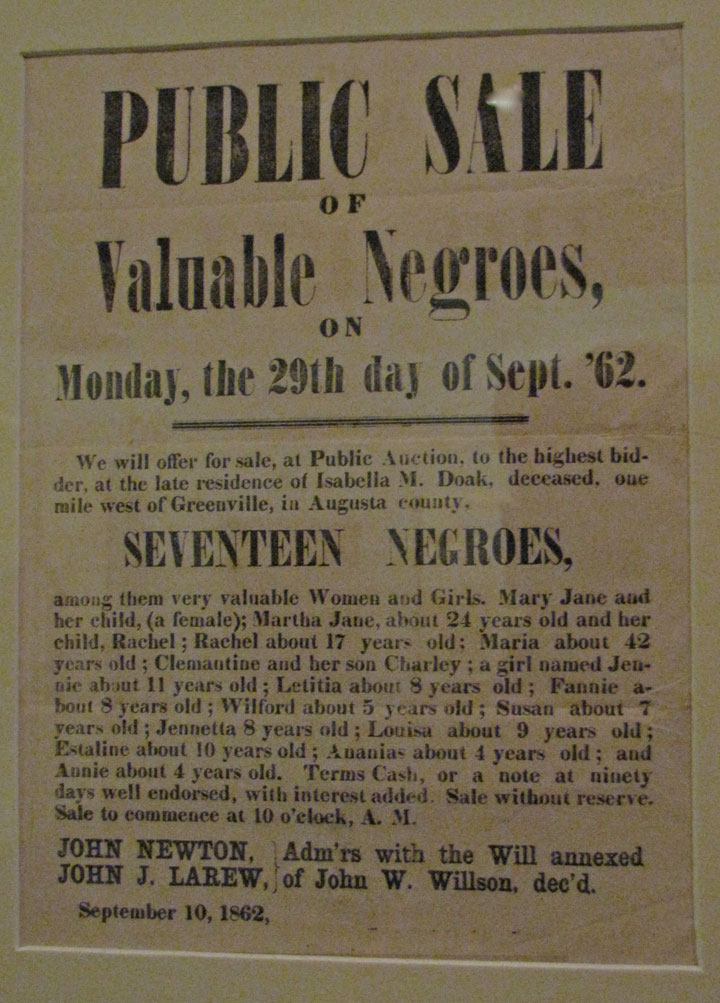
slave auction
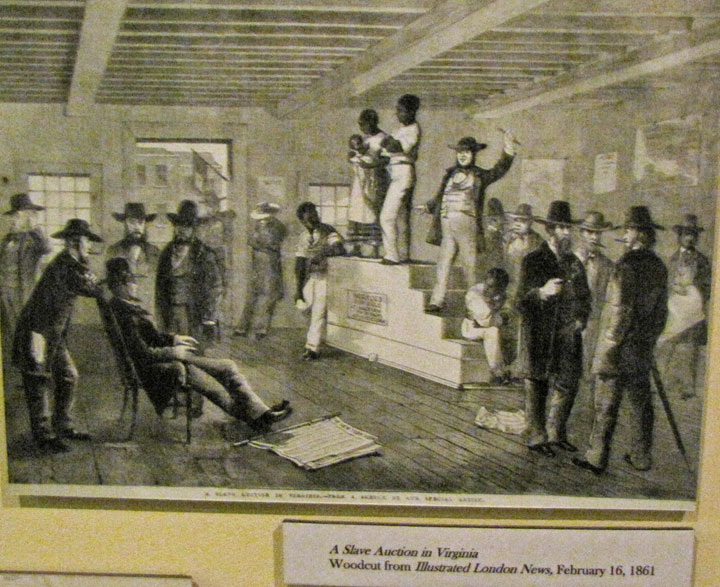
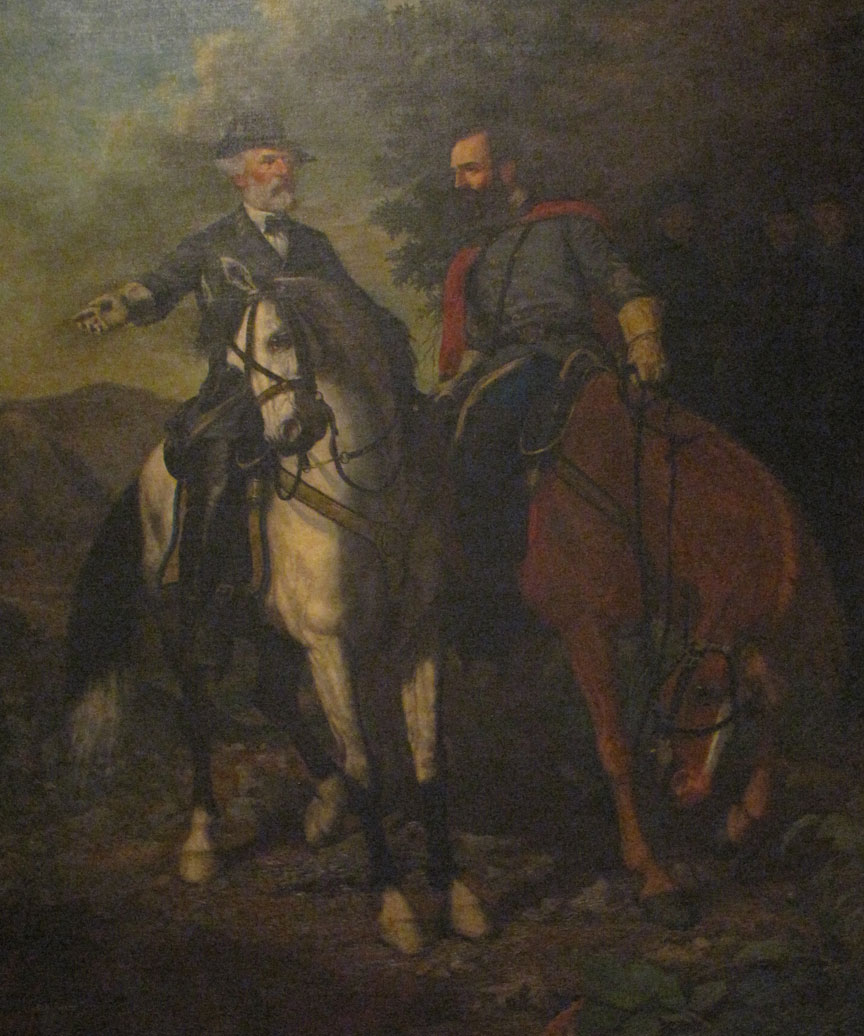
Lee and Jackson
More Photos of Confederate Leaders

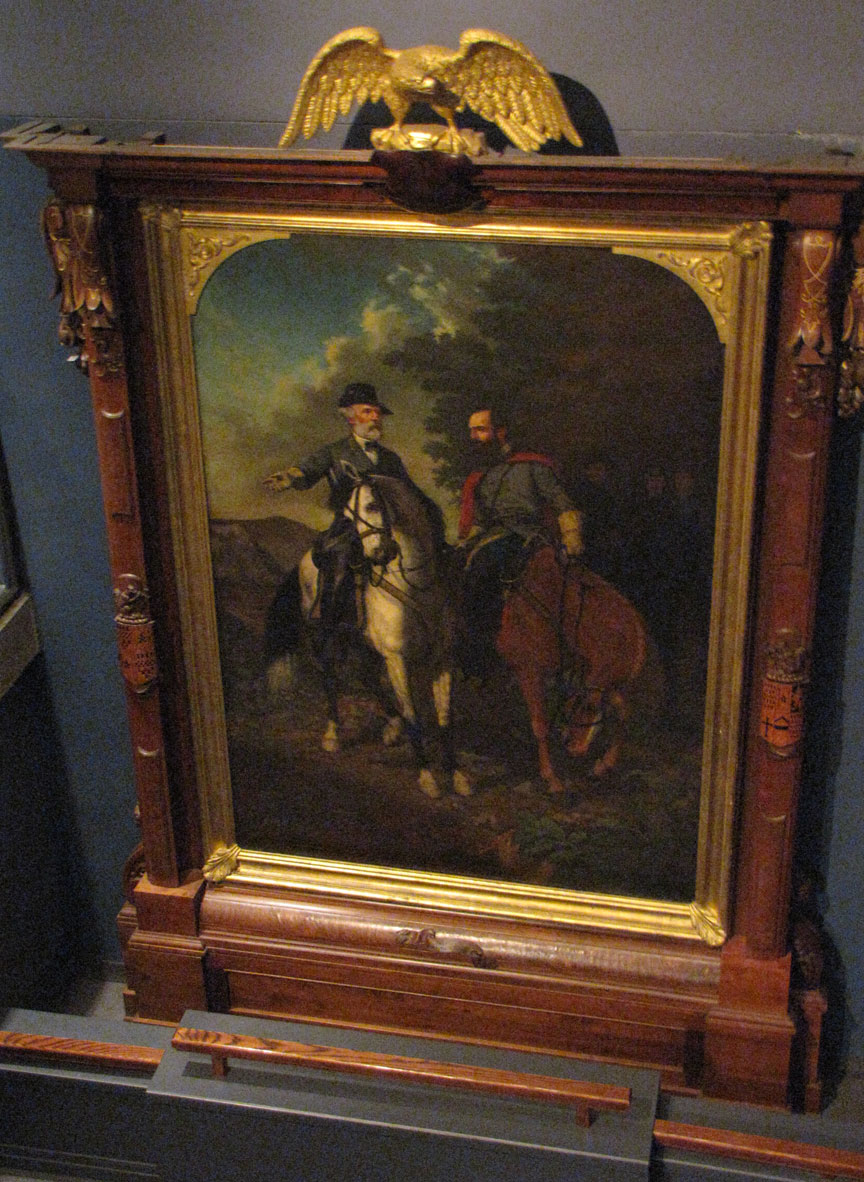
the large framed painting
